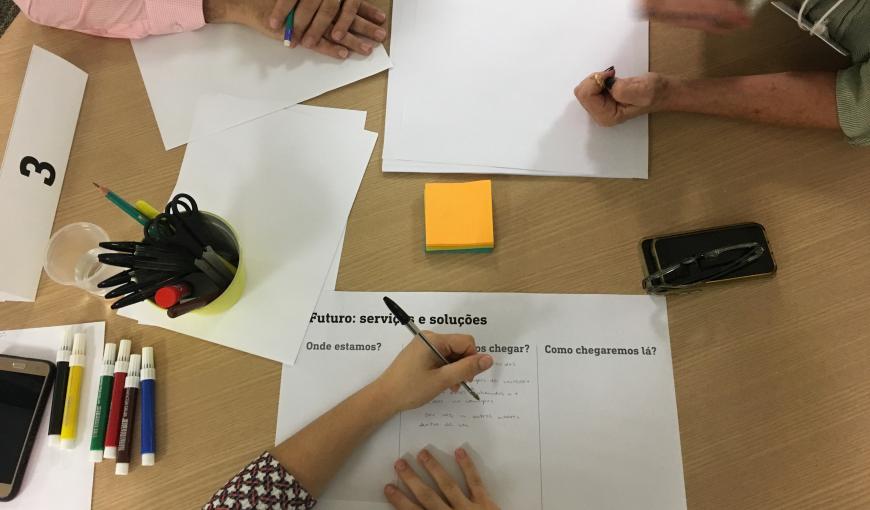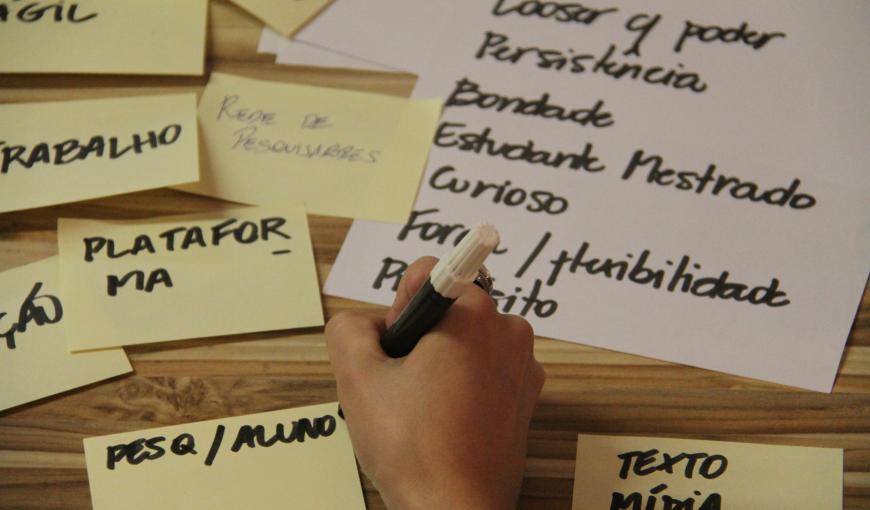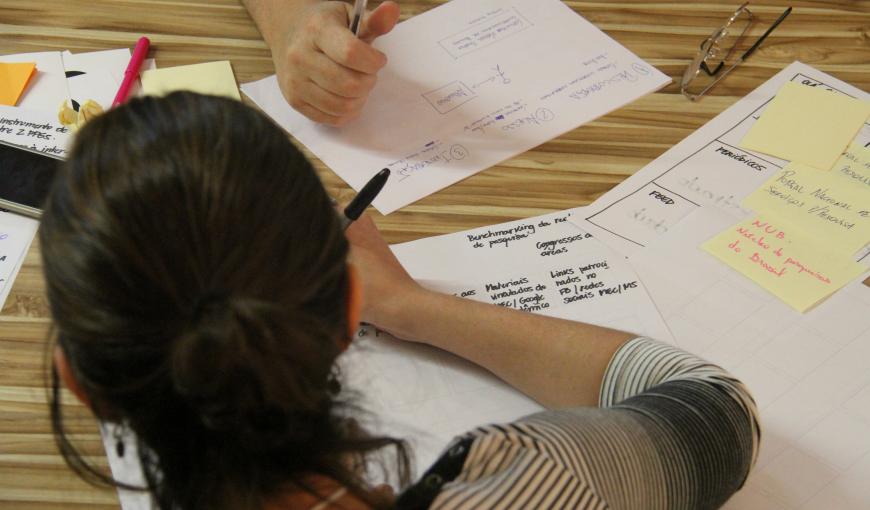Design Thinking: a new look on services and solutions development
The world is changing and organizations need to adapt quickly to new realities. And the market today points to the need for companies to be closer to their customers, listen to them and make deliveries that meet their expectations in a timely manner. What did RNP do? It began to approach the end users and to involve them in the process of creating products and services, in order to guarantee the satisfaction and real effectiveness with its deliveries.
The actions are based on Design Thinking, a modern approach centred on people, able to reveal a complete view of the challenge or problem to be worked on. It is a different way of solving problems, developing products/services and thinking projects based on the cognitive process that designers use, which consists of four steps: immersion (understanding), ideation (co-creation), prototyping and testing.
In the model adopted by RNP, one of the phases of the project consists of the performance of Design Sprints, a method created by Google Ventures that adds the approach of Design Thinking and Agile Methodology in building of new products and services. "It all starts with the immersion phase, through interviews and ethnographic observation. We understand the problem from several points of view and we consolidate the information that will guide the moment of co-creation, the so-called Design Sprints. At this stage, participants are guided through a journey of innovation that goes through the mapping of needs, creation, prototyping and testing of solutions. The idea is that in a few days, a multidisciplinary group of people (end users, customers, associates, designers, developers) can build ideas together and make them tangible", explained RNP Business analyst Carolina Souza, responsible for leading Design Sprints sessions on some of the organization's projects. Issues such as scale, support, service, specific or broad needs, sustainability, among others are also on the agenda.
"Design Thinking is based on three values: empathy, collaboration and experimentation. This new approach instigates RNP and its customers to adopt a more humane way of working, putting the end-user at the centre of the solution. And it is precisely by promoting this empathic look that solutions from this process tend to generate value in a more perceptible way to the user. In addition, the production of knowledge and value happens because ideas are tested. This allows us not to invest too many resources in ideas that we do not know if they will work. We try to make a quick mistake to get it right by following a flexible and iterative process. In addition to the economic benefits, Design Thinking, together with agile methodologies, encourages collaboration and formation of transversal self-managed teams, promoting a new way of working and generating, above all, changes in mind-set”, said Carolina.
Find out how the methodology is being used at RNP
The most recent example was the development of the Climate Change Impacts Monitoring and Observation System (Sismoi). The platform aims at integrating climate components to formulate public policies. In the early months of this year, RNP carried out an in-depth (immersion) research with federal and state government representatives, universities, research institutes, and union and non-governmental organizations. The group of respondents was then invited to a week of collaborative design (Design Sprint) in April, where requirements were set and priorities were defined for the platform pilot (co-creation and prototyping).
"The previous work of mapping the group and planning the actions was very important for the dynamics to result in the Sismoi MVP, from which the participants could have a view by the last day of the event", says Systems analyst Isabela Silva, who is working on the project development. The low-fidelity prototype was created and validated during Design Sprint, and the feedback received will guide the next development cycle of the solution, which includes the development of a navigable prototype and usability testing.
Another action that is underway and also uses the same approach aims at offering services and solutions to facilitate the daily life of researchers and the entire academic community, focusing on graduate programs (PPGs). Students, professors and coordinators of the PPGs selected by the pilot project, as well as the IT managers of these institutions, are helping RNP and Capes to develop new solutions in line with their needs. "I see this project as a new way of working at RNP. Internally, we are also guided by Design Thinking and agile methods to execute organizational development actions linked to the materialization of our vision for the future. With this initial experience with the PPGs, we are more confident of the path that we must take in other projects of the organization", said Marcello Frutig, RNP’s executive coordinator of Strategy.
The Networks School, RNP's training unit, also used agile methodologies to begin developing its Distance Learning model. "For the ESR activity, we adapted the models to better meet the challenges presented. So we have some templates available to facilitate collaboration and speed up the final result. The main ones were: Empathy Map, Value Proposition Canvas, Business Model Canvas and Customer Journey", said ESR analyst and action facilitator, Felipe Nascimento.
"The expectation is that these initiatives bring subsidies for the establishment of new models of offers, adapting and integrating with RNP's own solutions or in partnership with the market in a broad way, understanding the needs of customers and users, and boosting the results generated”, said the Deputy Director of Solutions, Antônio Carlos Fernandes Nunes.


